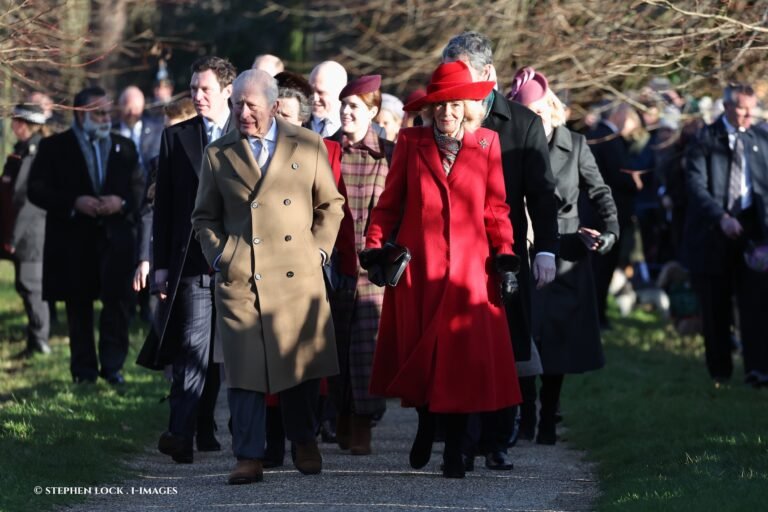For the Qatar State Banquet in December 2024, Queen Camilla opted to wear Queen Alexandra’s Kokoshnik Tiara – making it the first time since her husband’s accession that she has chosen to wear this tiara.
This occasion marked Camilla as the fourth British queen to don this exquisite piece, so let’s delve into the history and design of Queen Alexandra’s Kokoshnik Tiara….

Origins of Queen Alexandra’s Kokoshnik Tiara
In 1888, 365 peeresses of the United Kingdom, collectively known as the ‘Ladies of Society,’ commissioned a tiara from Garrard to commemorate Queen Alexandra’s silver wedding anniversary with Edward VII, then Prince of Wales.
The tiara drew inspiration from the traditional kokoshnik, a Russian headdress often worn by women as part of ceremonial attire. Alexandra’s sister, Maria Feodorovna, Empress of Russia, owned a similar kokoshnik-style tiara, which served as the primary design reference.
The choice of this motif highlighted Alexandra’s close familial ties to the Russian Imperial Family and her fondness for the culture and fashion of her native Denmark.
This tiara fused the opulence of Russian court jewels with the precision and craftsmanship of Western design, epitomizing the cosmopolitan spirit of its era.
Design of Queen Alexandra’s Kokoshnik Tiara
The original kokoshnik tiara featured 77 diamond-encrusted fringe bars, containing more than 400 diamonds. Notably, the piece was convertible, allowing it to be removed from its frame and worn as a necklace — a versatile feature also found in pieces like the Wessex aquamarine necklace tiara.
However, a key issue with the tiara soon emerged: the stiffness of its bars when worn as a tiara. This was resolved in 1980 when Garrard fitted a new self-adjusting frame, improving its comfort and usability.

At some point, 16 of the smallest diamond bars were removed, leaving the tiara with its current configuration of 61 graduated bars, set with a total of 488 diamonds. These bars create a halo-like effect, with perfectly matched diamonds cascading in size to form a seamless arc of light.
What distinguishes Queen Alexandra’s Kokoshnik Tiara from other royal jewels is its simplicity and geometric precision. Unlike floral or scrolling motifs seen in other tiaras, such as the Lover’s Knot Tiara, this piece relies on clean, linear design, allowing the diamonds to take centre stage.
The tiara’s appearances after Alexandra’s death
Following Queen Alexandra’s passing in 1925, the tiara was inherited by Queen Mary. Although Mary wore it occasionally, such as in a 1934 portrait by Hay Wrightson and on her 80th birthday in 1947, she favoured other fringe tiaras in her collection.

Queen Mary eventually passed the tiara to Queen Elizabeth (later the Queen Mother), and it became part of Queen Elizabeth II’s collection upon her accession in 1952. One of its earliest appearances during Elizabeth II’s reign was on her Commonwealth Tour of 1953–54.
Over the years, the Kokoshnik Tiara became a favourite of Elizabeth II, appearing frequently during state occasions, celebrations, and portraits. Towards the end of her reign, its appearances were less frequent, reserved for significant events such as State Visits and her Golden and Diamond Jubilee portraits/celebrations.







